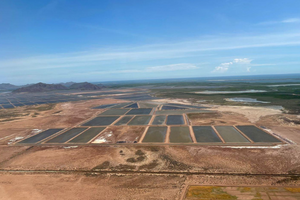
When it comes to consumption of U.S. grains and co-products, land-based creatures like humans, livestock and poultry easily spring to mind. However, the U.S. Grains Council (USGC) is seeing momentum build with an exciting demand driver – in the water.
For nearly a decade, the Council has worked in the aquaculture sector, predominantly in the Southeast Asia region to promote distiller’s dried grains with solubles (DDGS) use in pangasius and tilapia diets. With the expansion of higher protein corn co-products and even new possibilities for sorghum and barley-related proteins, Council staff is working to best position DDGS and other grain co-products to meet diet demands for fresh water, salt water and shrimp species.
To help reach the Council’s goal of creating 1.125 million metric tons (MMT) of new demand for U.S. DDGS in Southeast Asia, USGC has invested significantly in both resources and relationships to target the aquaculture sector.
Ronnie Tan, USGC’s regional aquaculture consultant for Southeast Asia, spoke at “Shrimp Talks” earlier in the year, discussing how DDGS could help Indonesia reach its goal of increasing shrimp exports by 250 percent in the coming years.
The Council has also looked beyond Southeast Asia to other parts of the globe where aquaculture provides increased opportunities. This year, the Council was awarded a grant from the United States Department of Agriculture’s (USDA’s) Foreign Agricultural Service (FAS) to work on aquaculture promotion programs in Morocco, with the goals of promoting investment by the Moroccan feed industry into aquaculture projects and developing the technical knowledge to produce quality aquaculture feeds for the various species under production.
Mexico’s aquaculture industry is also of interest when promoting DDGS use. Patricia Esqueda and Javier Chavez, USGC marketing specialists in Mexico, visited Sinaloa (Los Mochis) and Sonora in 2021 to evaluate the market potential of regular and high-protein (HiPro) DDGS in the aquaculture industry. The pair focused mainly on shrimp production while there, which is the most developed aquaculture activity in the area.

